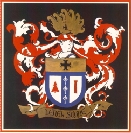| St Joseph College Sint-Jozefcollege | |
|---|---|
 | |
| Location | |
 | |
| , | |
| Information | |
| Type | Private Roman Catholic non-profit coeducational Primary and Secondary school |
| Religious affiliation(s) | Roman Carholic (Jesuit) |
| Established | 1845 |
| Founder | Society of Jesus |
| Campus | Suburban |
| Website | St Joseph College |
 | |
St Joseph College (Dutch: Sint-Jozefcollege) is a Roman Catholic secondary school in Turnhout, Belgium. It was founded by the Society of Jesus in 1845 and was rebuilt in the same style as Xaverius College in Borgerhout.[1]
History[edit]
As early as 1639, there was a Latin school in the area. This lasted until the 1796 and the Napoleonic wars.[2]
In 1845 a landowner, Maria de Nef, asked the Jesuits to take over the school. It was re-established as the Collegium Sancti Josephi Turnholtanum. Over the following 90 years, its campus grew in size to accommodate the increasing student population. In 1935, a new school was built on a 22-acre site on the outskirts of the city. In 1941, this was expanded and in 1958 a new primary school was built.[2]
Originally, it only taught Greek and Latin. In 1959, sciences were introduced and in 1985 it became co-educational.[2]
Alumni[edit]
Notable former students include:
Gallery[edit]
-
Original Latin School Charter
-
Old College drawing
See also[edit]
References[edit]
- ^ Jesuits in Europe retrieved 20 February 2014
- ^ a b c 150 jaar Sint-Jozefcollege Turnhout 1845-1995 (Turnout: Boekenantiquariaat De Lezenaar, 1996) pp. 200-220.




Well, that’s interesting to know that Psilotum nudum are known as whisk ferns. Psilotum nudum is the commoner species of the two. While the P. flaccidum is a rare species and is found in the tropical islands. Both the species are usually epiphytic in habit and grow upon tree ferns. These species may also be terrestrial and grow in humus or in the crevices of the rocks.
View the detailed Guide of Psilotum nudum: Detailed Study Of Psilotum Nudum (Whisk Fern), Classification, Anatomy, Reproduction